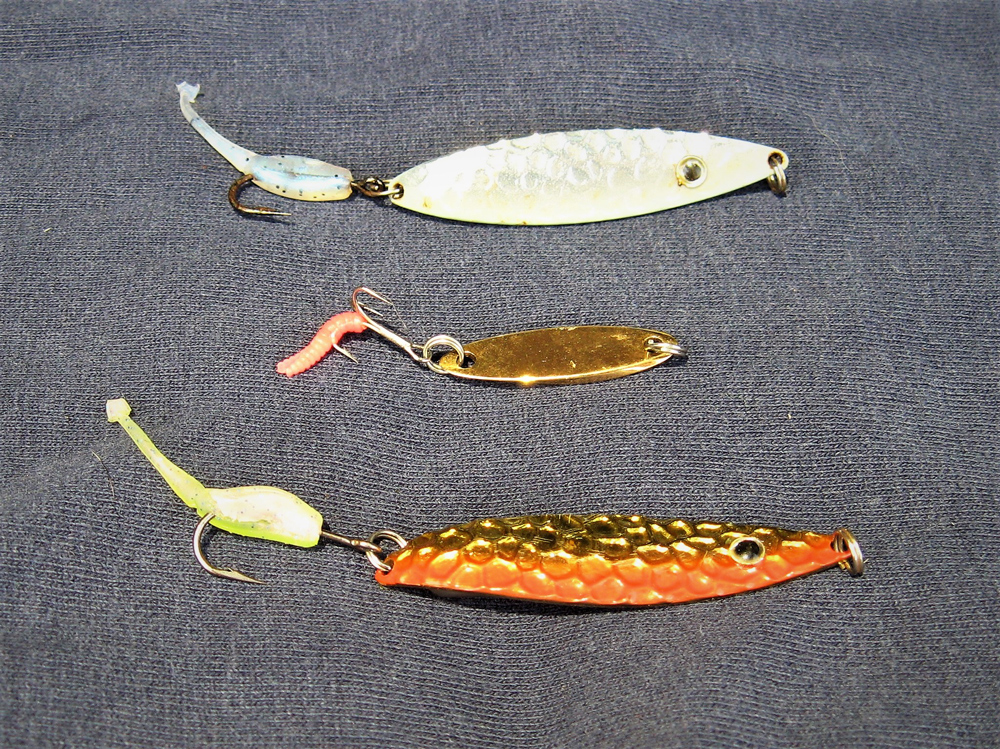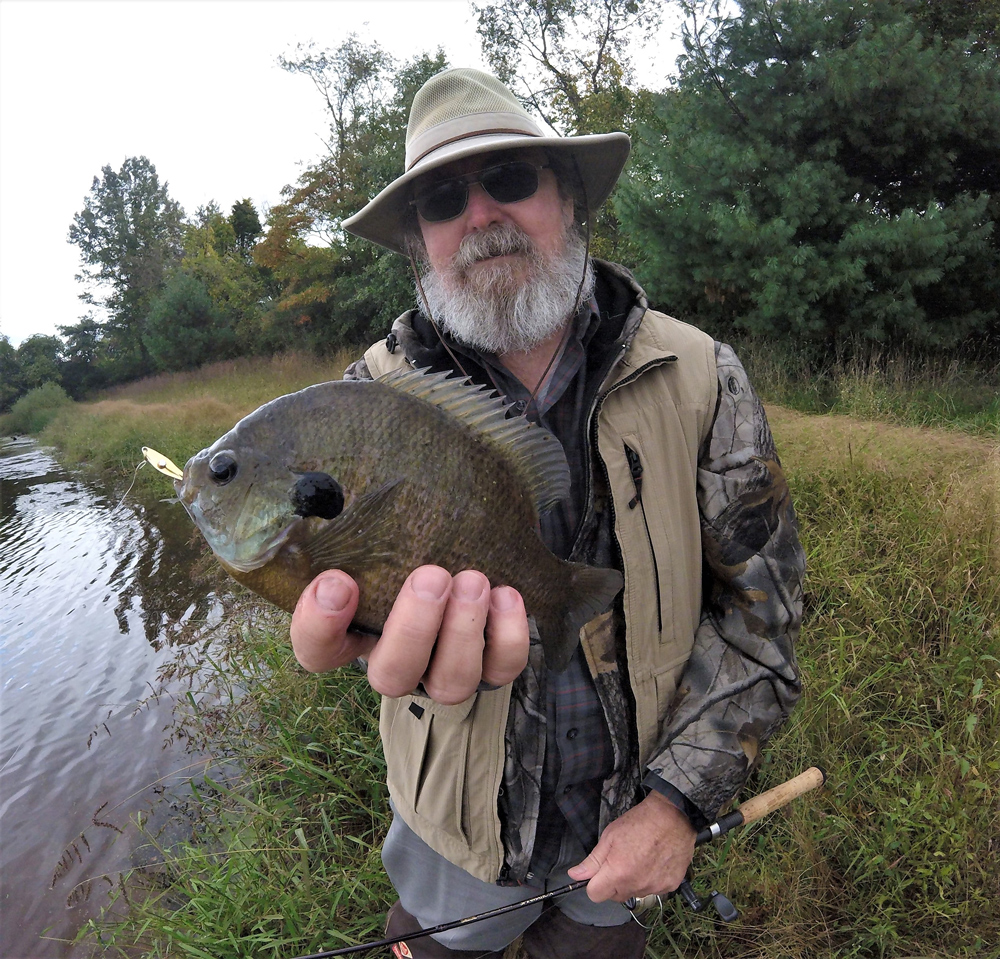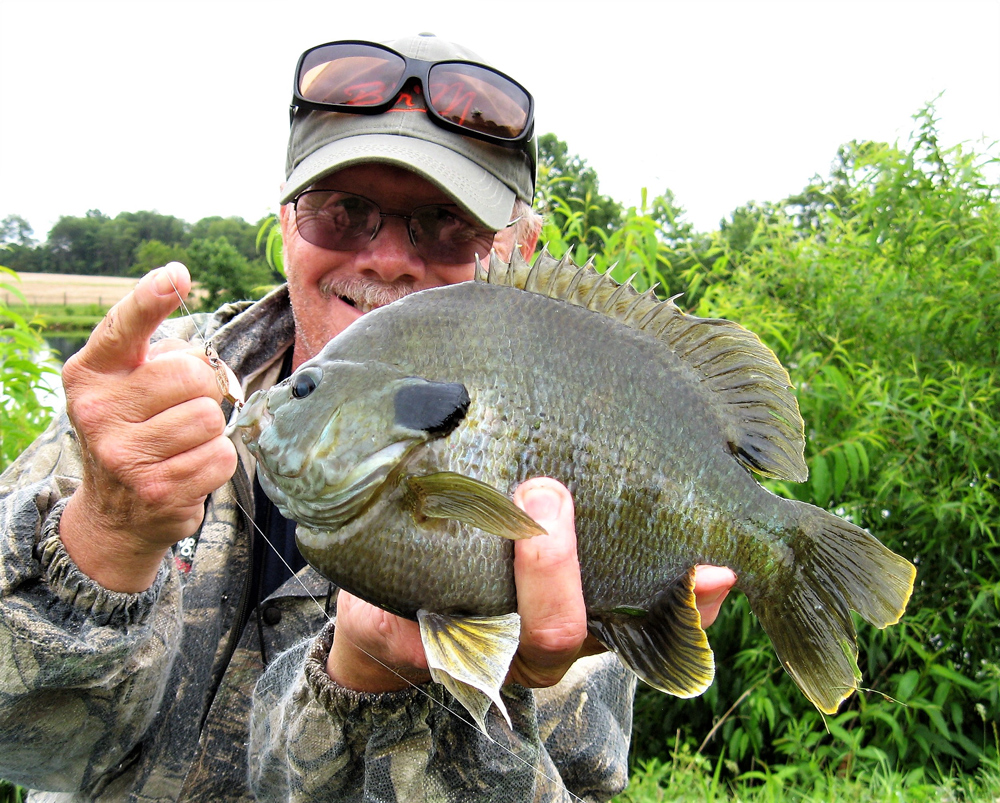Over the years, I’ve come to realize that small, 1/12th to even quarter-ounce spoons can be absolute dynamite when fishing for species including bluegills, crappies, and white and yellow perch. The horizontal – not vertical – presentation in open water environs has, on more than one occasion, saved the day for me when other more traditional tactics sputtered. Almost 10 years ago a good cyber friend of mine, Bill “Musky” Modica, outlined very highly effective tactics for catching a variety of panfish on spoons. His tutorials were located on several high-impact websites and later featured nationally in the IN-FISHERMAN magazine and television episodes. Modica explained to me that the majority of his panfishing, year-round, was done with simple spoon-fishing patterns that were highly successful. I surely knew that straight vertical jigging was the bomb for many spoon fishers among the ice-fishing crowd, but didn’t realize the effectiveness of the hardware on open-water pannies.

Last October my brother Tom Gronaw and I were having a slow day at one of our favorite trophy bluegill ponds, where fish were just not responding to traditional bobber/jig/bait options that usually score well. On a hunch, Tom sifted through a small box of shad lures, which included a variety of gold and silver Hildebrandt and Nungesser spoons. Knotting a gold 1/16 th ounce flutter spoon to his four-pound line, he made but a few casts before he received a solid strike. Thinking bass, Tom was much surprised when a 10-inch-plus bluegill gave a powerhouse fight and stubbornly came to hand. Thinking it was a rare catch he continued, only to score another rotund bluegill that doubled over his ultralight rod. I quickly begged for a spoon and within five minutes, picked up a bruiser. Clearly, the spoon gig had something those big bluegills wanted.

Spoon Fishing Options
Currently, there are several companies that make small spoons that are excellent for big panfish when applied with cast and retrieve methods. Among them are Kast Masters in sizes 1/10 th to 1/8 th ounce, Swedish Pimples in 1/16 th and 1/8 th ounce, Blue Fox Flash Spoons from 1/16 th to quarter-ounce, and the classic trout-killing Supper Duper in 1/12 th and 1/16 th ounce models. Throw in the previously mentioned Hildebrandt and Nungesser shad spoons, and you have a lot to choose from. Each spoon has distinct characteristics in the way they sway during the retrieve. Traditionally, Supper Duper spoons are lighter per lure length and their U-shaped design can be adjusted by opening or tightening the spoons’ gap, which can give the spoon a wider, or a tighter, wobble. At times, such a small adjustment can mean the difference between a couple fish, or a lot of fish. Also, the thin metal construction of the spoon lends nicely for shallow water applications or when fish are feeding high in the water column.
On the opposite end of the spectrum you have the heavier Kast Master spoons that are thicker, sink quickly, and can cast a mile on standard four-pound test monofilaments. Another standard-issue bait for springtime trout addicts, Kast Master spoons team nicely with small plastic trailers or bait options such as Gulp! one-inch Minnows in smelt or emerald shiner.
We like to remove the treble hooks from the back of some spoons and attach a single hook, especially if you are adding a trailer. The back-and-forth action of the trailer can often be a catalyst for provoking aggressive strikes from bigger bluegills and crappies. The Swedish Pimples are also a heavier piece of hardware and many come with a single hook to switch out for either a live bait or trailer application. These heavier spoons, though still small by most angling standards, tend to work best when retrieved slowly and deeper in the water column in eight to 15 feet of water.
One of my favorites is actually a spoon that is no longer on the market, the Blue Fox Rattlin’ Flash spoons that featured a tiny plastic casing with beads in it. When fished with twitches and pauses, these spoons created both action and sound that gills and crappies found irresistible. Even models as large as a quarter of an ounce would not scare off a 10-inch bluegill or a 14-inch crappie. The two largest hybrid sunfish I have ever caught were taken on the quarter-ounce model – both fish over two pounds. As with many quality items in the fishing world, they stopped making them and the Blue Fox Flash Spoons are now the ones that are available. A good spoon, they are not quite the fish-catcher that the rattling spoons were.
Colors and Retrieves
For the most part, customary silver and gold spoons will get you in the ball park and often be all that is needed for catching fish. However, there are times when a specific color or color combination shines. I have had good success with rainbow/rainbow trout patterned spoons on days when fish would ignore the standards. The Supper Duper and Blue Fox spoons boast a varied lineup of lures that run from orange to chrome-blue to even fluorescent hues, to accommodate water clarity and conditions. Experiment.

At times, trailers and tipping baits may be required to cash in. For plastic trailers, I like the Bobby Garland line of Itty Bit Swimr’s in ice blue, chartreuse and electric chicken (pink and chartreuse). Also, the Cajun Cricket options from Bobby Garland are also good choices. The earlier mention of Berkley Gulp! Minnows in the one-inch size not only adds visual appeal but scent as well. As fall temperatures drop and fish get a little fussy, the scent factor can certainly help to trigger strikes. Don’t be afraid to add some of the “Real McCoy” to the spoons. Pieces of nightcrawler, mealworms, maggots, minnows or waxworms can trigger strikes when other tipping options fail. I have seen some anglers use tiny slivers of cut bluegill or crappie as a tipping enhancement with great success.
Keep in mind that most of the time, a slow, steady pace will get you more strikes and allow better hooksets than a quick, herk-jerky retrieve. For deeper fish, Modica likes to allow the spoon to settle on or near the bottom, then utilize a gentle lift-pause cadence. Almost all the strikes occur immediately after the pause. With active fish, however, vary your retrieve speed until you find out what works best for that species, that day. Additionally, this is a multi-species technique. Don’t be surprised if you hook a quality largemouth or smallmouth bass, channel catfish, pike, or pickerel while throwing the metal for panfish. Keep this tactic in you back pocket – it may just save the day!
- By Jim Gronaw